Restoring a Cult Hero: The Supercheap AU
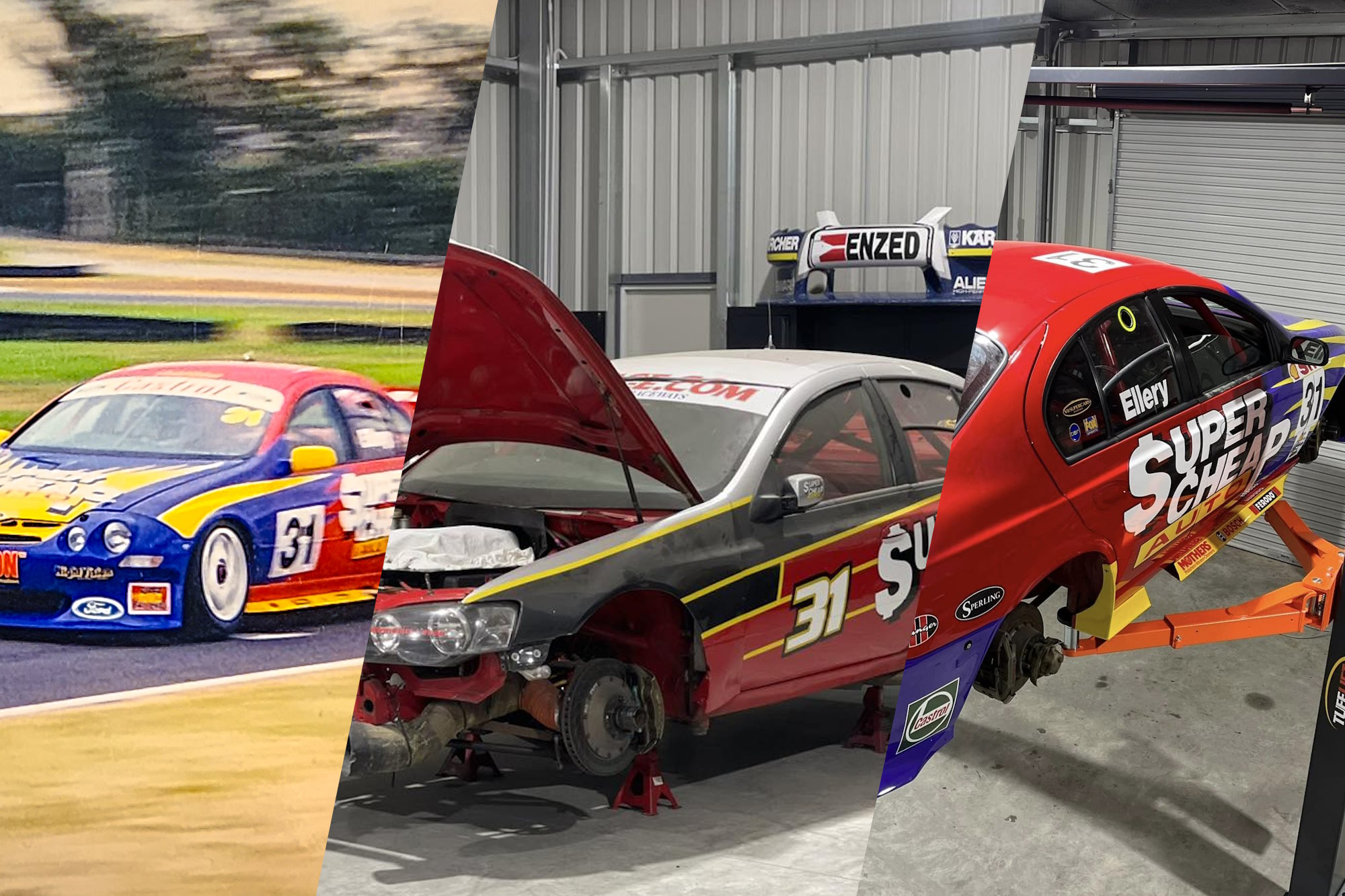
It’s been 25 years in the making, but the AU Falcon is now an overnight classic.
Although the model never enjoyed the championship success of either the EL or BA for the Blue Oval, one of the slippery Fords that tasted success in both the main game and development series is being restored to its period-correct trim.
Through the process, the car has garnered a loyal online following, with fans being given a special insight into the restoration of a classic. In return, home viewers have provided a treasure trove of information to assist in the build.
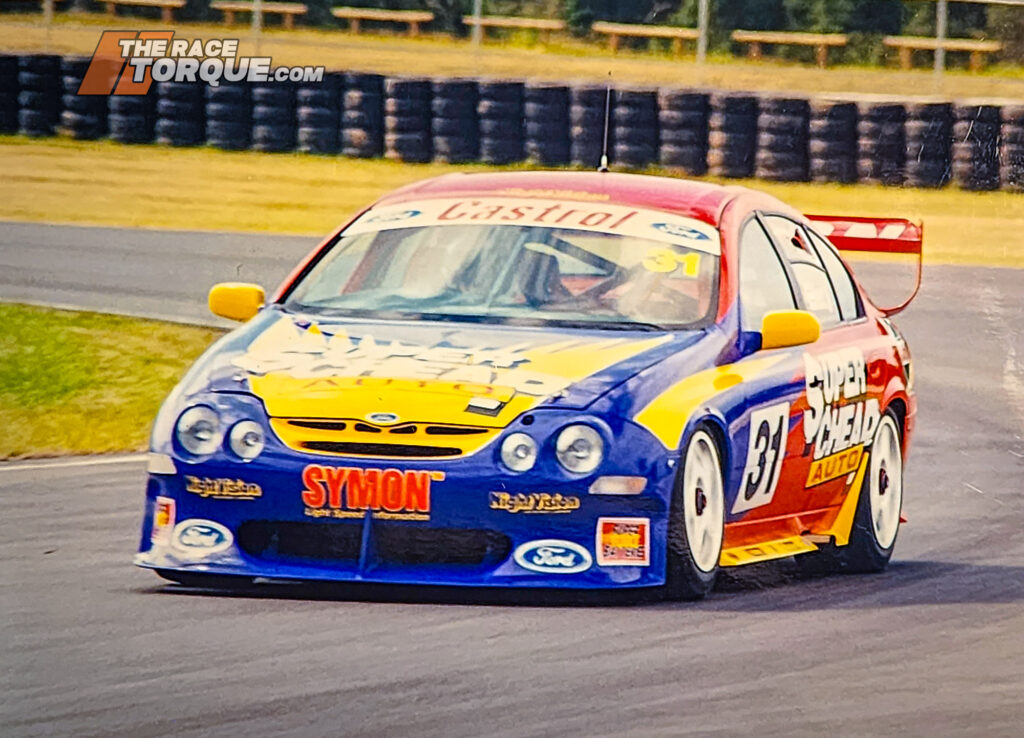
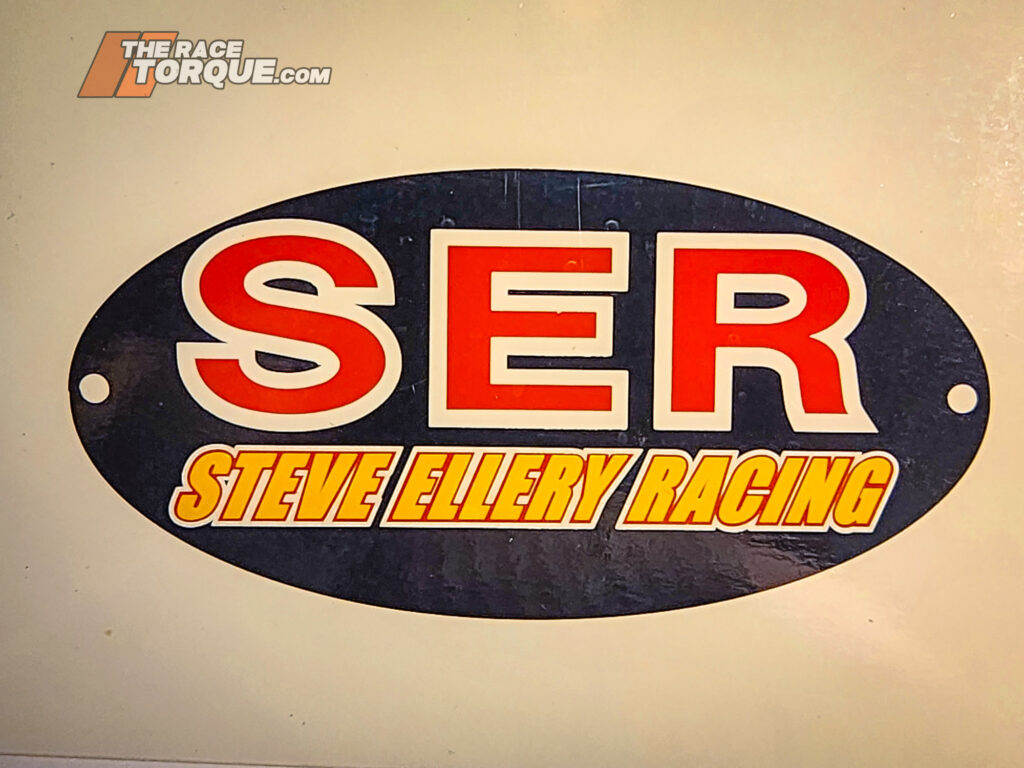
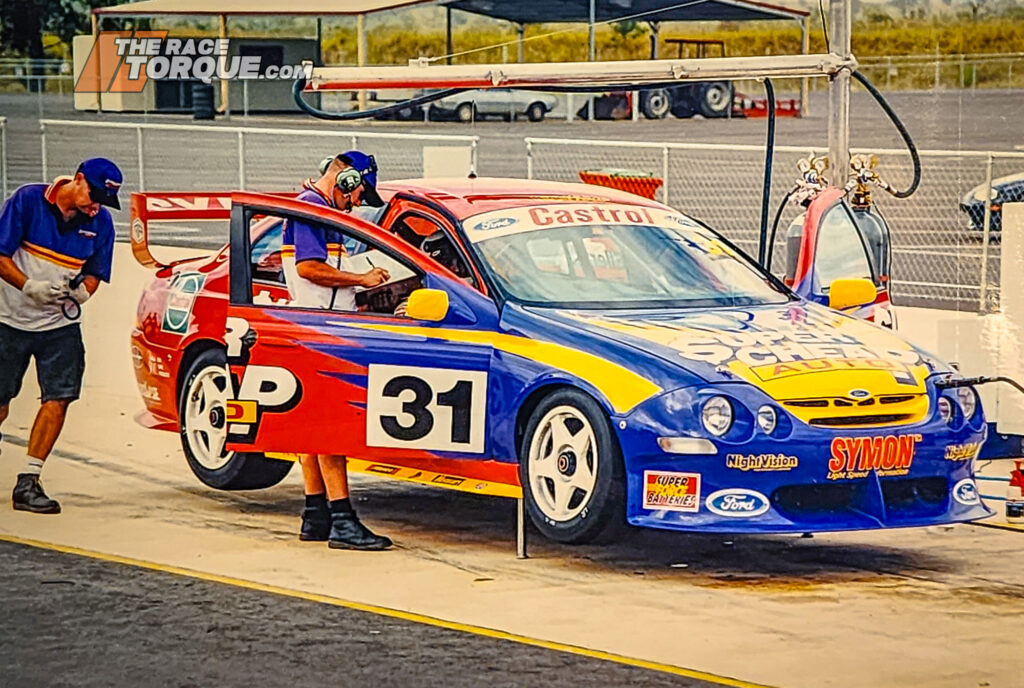
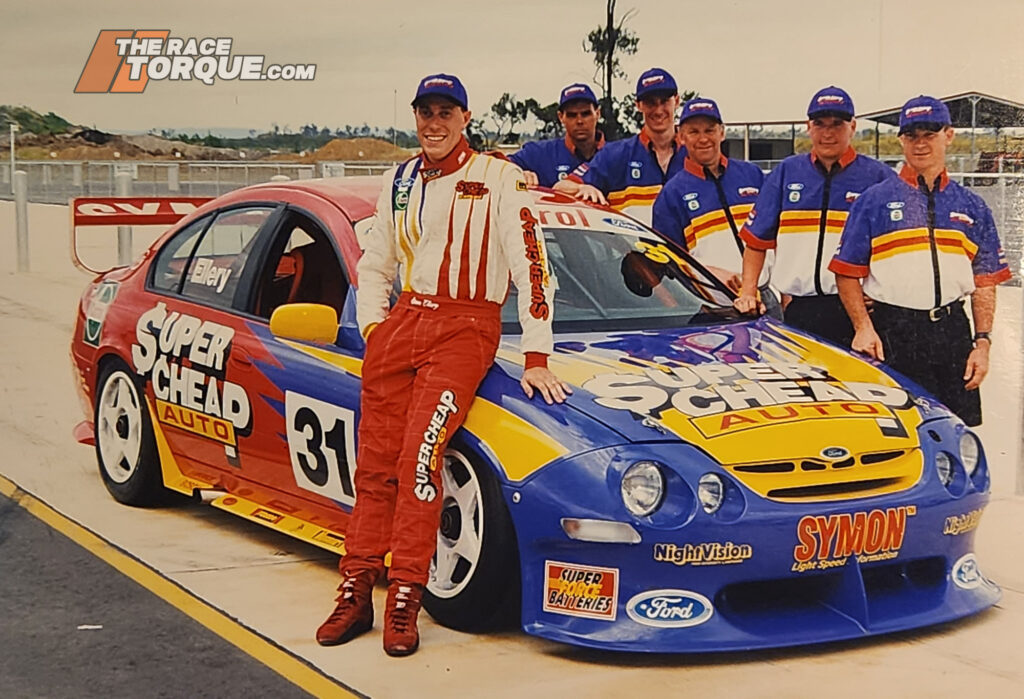
SER 1 on debut at Queensland Raceway in early 2000.
Introducing SER 1
By the year 2000, Steven Ellery was amassing some significant credits in touring car circles, having honed his craft in Super Touring before taking the plunge into V8 Supercars in a limited campaign in ‘99 with an aging EL, which netted a best result of fourth at Oran Park.
Enter Supercheap Auto.
Following some lower-level campaigns, the Queensland company joined the V8 Supercars fray with John Briggs from the end of 1998 through ’99.
However, in 2000, with Briggs focusing on John Bowe’s CAT-sponsored car, Supercheap Auto ultimately landed with Ellery.
For the new season, the team debuted an AU based on a Peter Beehag shell. Ellery used the car throughout the entire 2000 season and in ’01 up until the debut of a second build, which came online at Winton.
A highlight for chassis SER 1 was a race win at the penultimate round of the season at Sandown – the underdog squad took it up to the big boys with a package that demonstrated tremendous straight-line speed down the Springvale dragstrips.
The 2001 campaign saw improved performances across the board, netting Ellery ninth in the final standings.
The car then sat on the sidelines until 2002, when Supercheap Auto Managing Director Bob Thorn raced it at the opening round of the Konica Series from Wakefield Park. Luke Youlden subsequently used the car at Phillip Island (to a best finish of third) and Mallala, before winning the non-championship curtain-raiser at Bathurst.
SER 1 was then reskinned as a BA, unlike most other BAs, which were fresh builds with a different floor pan. The car was utilised for ride days with continued support from Supercheap.
However, its racing days weren’t over, with the car finishing second in the AMRS enduro at Wakefield Park in 2007.
From there, it was housed at Queensland Raceway under the ownership of John Tetley and Rod Dawson.
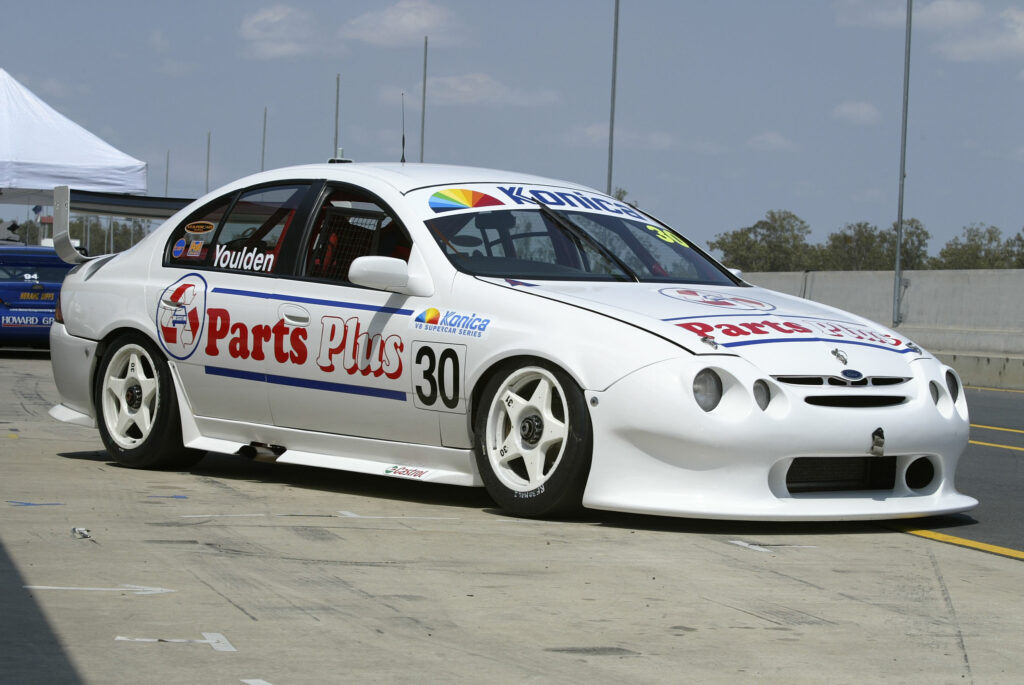
Media file photo form 2001
The Restoration
Now, 17 years after the car was last raced, SER 1 is being brought back to its former glory, with attention to detail core to the restoration.
And it’s an ongoing tale that is playing out on Facebook to an ever-growing audience, with the AU V8 Supercar Restoration – Ellery #31 page recently ticking over 5,000 followers since work commenced in July 2023.
For the page’s highly engaged followers, it’s an informative and entertaining journey, that is drawing in fans from both sides of the red and blue divide.
So, why on earth would you take on the challenge of restoring an old V8 Supercar, especially an AU?
“I grew up as a Ford fan, but since the Australian car industry’s demise, I have become more of a fan of Australian motoring history in general,” noted the car’s custodian.
“The AU Falcon has developed a cult following, probably for all the wrong reasons as far as a race car is concerned.
“I remember as a teenager, the early 2000s weren’t a fun time to be a Ford fan in V8 Supercars.
“I was lucky enough to attend my first ever V8 supercar event at Sandown in 2000 with my dad, and I have fond memories of sitting in the grandstands watching Ford clean sweep the weekend between Ellery and (Paul) Radisich.
“It was like witnessing a miracle!”
However, like practically any renovation, the job has proven to be a greater challenge than initially anticipated.
“When negotiating a purchase price, it was suggested that it was just a few panels to convert it back to an AU, which proved to be incorrect,” he said.
“If I’m 100 per cent honest, I would have reconsidered taking the job on if I had known what was involved, but seeing the car in AU spec once again has made it worthwhile.”
At the heart of the restoration works is keeping all of the various aspects true to the original period article—the right parts, the right fit, and the proper livery. The engaged social media audience has been crucial in this area.
For instance, the livery has proven to be difficult to nail down – comparing period photos, it was noticeable that stickers were positioned slightly differently from round to round, plus a lot of the branding on the car has evolved over time, which has resulted in extensive research to source the correct logos.
However, one factor working in favour of the restoration is that from its racing days, the vehicle was used extensively in ride-day trim, ensuring that it wasn’t butchered or further developed away from its race-winning specification.
“Uprights, fuel pumps, and other components are all date-coded to the car’s time in the main game,” he said.
“Having this as a starting point has made researching everything else a lot easier.
“That being said, investigations are continuing on items like the engine and driveline as we have no service history and little documentation when we got the car.”
The heart of the matter: an original Alan Jones Racing powerplant, which was run by the Ellery team in period.
Developing an Online Community
Setting up the Facebook page for the build has presented opportunities that simply would not have been available without it.
“I have no experience when it comes to making videos for social media, and I am far more comfortable locked away in the workshop getting my hands dirty,” he said.
“I created the page in the hope of gathering information, and it became clear that there is still a strong following for these cars and the era of V8 Supercars.
“There has been a lot of assistance from the page, with many people reaching out with information that wouldn’t have normally been available via other channels.
“We have had page followers provide race-damaged panels and memorabilia, which has helped us ensure everything is as close to 2000/’01 spec as possible.
“A lot of the ‘One percenters’ have been difficult; things like the bar mounts, ducting, boot layout… basically anything you can’t see on TV or from (external) photos.
“This is where ex-team members and others with a connection to the car reaching out has been invaluable.”
So, what will become of the car when it is completed?
“There is no set plan yet – I did not anticipate the following when I started this project and we have had many suggestions from page followers on what events it should be run at once complete,” he said.
“Once the car is a little closer to completion, we will start locking some plans away.
“It would be great to see the car reunited with the Ellery family at some stage, but there is a long road ahead before we get to that point.
“I would like to thank everyone who has followed the journey so far and those who have contributed information and feedback.
“It’s enabled the car to make the progress it has with a higher level of accuracy not possible without the information supplied.”
Contributing: Caspar D’arcy-Fox














